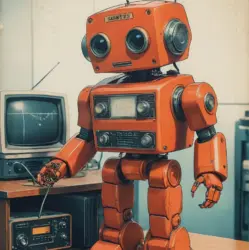In The Master Algorithm by Pedro Domingos, the author has some interesting thoughts on the “master algorithm”. Just like physicists want to find a universal formula for everything, a similar quest is what some in the machine learning world are looking for, and could simplify or bring new insights to how the world works through collected data. Just as many useful algorithms can be used in different ways – for example a super simple neural net can find pi, or a neural net can tell the difference between a dog and a cat, why can’t there be one that could run all machine learning problems?
The problem with this would first of all be the parameters and setup. AI needs settings and setup of the data in a form that’s usable, and will output categorizations from data… numbers in, numbers out. That would not necessarily tell you new things about the world without observer programming what that means.
This book seems to have more philosophising, understanding the concepts than code, if that’s what you’re looking for… There are some very awkward analogies it makes – does asking for a date make a good comparison to building database for AI purposes? Is Pascal’s wager, one religion offering eternal life, analogous to different algorithms offering accuracy? (is there any other religion that offers as its aim the one person that historically did die and was risen in three days, offering this hope?) – that you can judge for yourself, I’d say philosophizing is quite off.
Another error is found on page 83, where the author says all computer mistakes are a programmer/engineer’s fault while cells can be mutated by radiation. In fact, cosmic rays can affect computer hardware.
The book gives some interesting observations on multidimensional data (p187), that with many dimensions there can be vastly more possibilities. Also with a hypothetical orange of 10% “pulp” on the outside, “means 73 percent of the volume of the orage is pulp (.9^3). Now consider a hyperorange: still with 90 percent of the radius occupied by pulp, but in a hundred dimensions….(0.9^100)” would be 0.000026561! However as it mentions later many may be about the same in one dimension, like items at or near the float are sort of 2-dimensional in 3 dimensions.
The author seems to think the new machine learning/robot possibilities will open up a new era of utopia and “The newly unemployed majority will vote for generous lifetime unemployment benefits and the sky-high taxes needed to fund them. These won’t break the bank because machines will do the necessary production.” and perhaps we will want to reduce the employment rate? This sounds like a socialist utopia which makes us dependent on machines, machines a new generation possibly won’t understand 🙁 It seems apt that Bill Gates recommends this book… Let us reboot a socialist economy, and re boot it again if it doesn’t work the first time?
